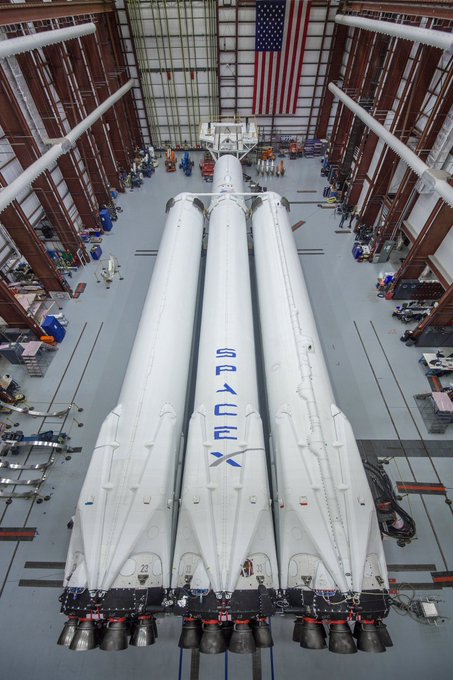Falcon Heavy on the launchpad
Capitalism in space: SpaceX has finally rolled the first Falcon Heavy rocket out to its launchpad in preparation for at least one static fire engine test prior to is first launch.
SpaceX engineers are expected to conduct a fit check and complete other tests at pad 39A this week, followed by a hold-down firing of all 27 first stage engines some time after New Year’s Day. The company has not set a target date for the Falcon Heavy’s first liftoff, but officials say the launch is targeted in January, some time after the hold-down hotfire test.
Should it launch successfully, the Falcon Heavy will be the most powerful rocket in the world.
Update: They have now lowered the Falcon Heavy to a horizontal position. I suspect that the raising and lowering were both part of the fit check tests, and that they will soon raise the rocket up again.
Capitalism in space: SpaceX has finally rolled the first Falcon Heavy rocket out to its launchpad in preparation for at least one static fire engine test prior to is first launch.
SpaceX engineers are expected to conduct a fit check and complete other tests at pad 39A this week, followed by a hold-down firing of all 27 first stage engines some time after New Year’s Day. The company has not set a target date for the Falcon Heavy’s first liftoff, but officials say the launch is targeted in January, some time after the hold-down hotfire test.
Should it launch successfully, the Falcon Heavy will be the most powerful rocket in the world.
Update: They have now lowered the Falcon Heavy to a horizontal position. I suspect that the raising and lowering were both part of the fit check tests, and that they will soon raise the rocket up again.



